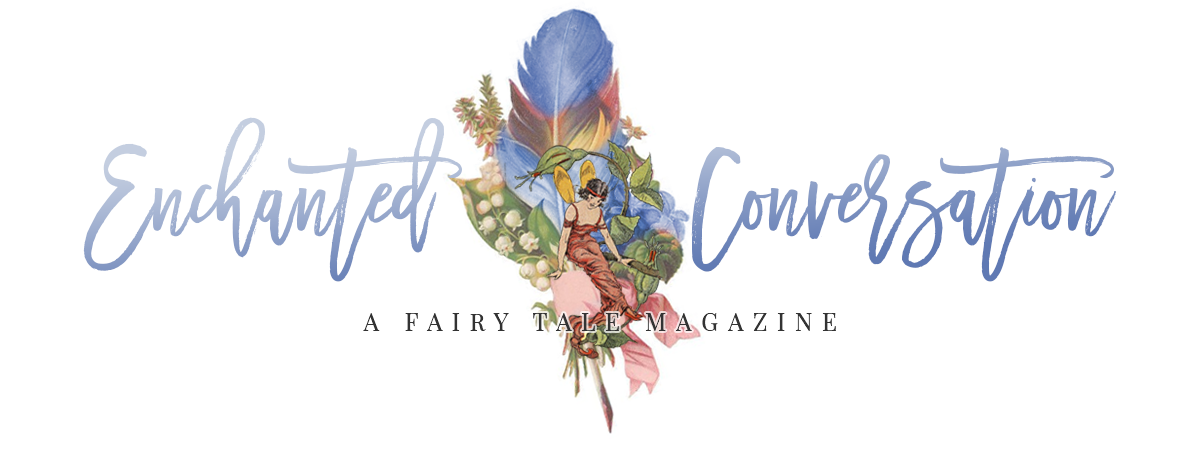Editor's note: At last, our first guest blog post. We already have many more waiting in the wings, but we are especially glad to be starting with John's work. John has had several contest-winning pieces in EC, and is a doctoral candidate at University of St. Andrews, in Scotland. His outstanding blog, The Paradoxes of Mr. Pond is well-worth checking out. Super-scholar that he is, John has provided a list of his cited works, and we've included it at the end of the post. We hope you'll be as challenged and intrigued by this post as we were. Happy reading!
There’s a Jewish saying: "Don’t ask questions of fairy tales." If you’re at all like me, you know that’s pretty hard. Questioning fairy tales is fascinating, certainly for scholars and writers, and for many readers as well.
We like interrogating tales to reveal their subconscious or occluded motives. We like taking them apart and rearranging them, like bits of clockwork on black velvet. We like observing them in social settings, in different styles of manner and dress. And all of these are good things.
But when we question fairy tales, it’s tempting to think the fairy tale has answered.
Consider the strange case of "Snow White." It’s one of the most famous, even notorious, of fairy tales. You can read some versions of it here and here. Walt Disney read it as a parable of domestic bliss and the bubbling of young love. Neil Gaiman read it as a presentation of domestic abuse and the ravening of a vampire. We’re more likely to recognize Disney’s vision than Gaiman’s—it’s been around longer, for one thing—but how can two savagely different readings possibly be the same fairy tale?
Jack Zipes has suggested that "Snow White" is about female competition (133-136). The locus of the struggle is physical appearance and, by metonymy, erotic appeal of the (step)mother and daughter. Certainly Arthur Rackham’s illustration of the magic mirror suggests that’s what the story is about, as have many other retellings.
But, as my friend irreverently recently asked, what if it isn’t? What happens to the tale if that’s not the point?
There’s a fascinating hint in the first paragraph:
If only I had a child as white as snow, as red as blood, and as black as the wood in this frame.
The queen’s wish is for a child that’s black, white, red. That’s the classic color spectrum in literary alchemy.
If you’ve read Harry Potter, you’ve encountered a great example of literary alchemy, though the tradition is hundreds of years old. Here’s a crash introduction.* Each color represents a different phase of the alchemical process, or Great Work as the alchemists called it. Black signifies the nigredo stage, where the lead or base metal is burned, to remove its impurities. White is the second stage, albedo, where the purified matter is washed repeatedly to transmute it into the final stage, rubedo, signified by (you guessed it) red and gold. The beginning of the rubedo is signified by the blossoming of streak of red on the white metal; the metal is put into a container, symbolised by burial or interment in a coffin, until the transmutation is complete. The elements in the metal that were in opposition—fluid and solid, female and male, life and death, and so on—become reconciled; this is called the alchemical marriage.
When the metal reaches this stage, said the alchemists, it possesses the power to transmute all material substance to gold. But alchemists understood their Great Work to be as much psychical and spiritual as material; it involved a personal journey, not just experimenting with metal. It gave the alchemist eternal life. The final product of the Great Work was called "The Philosopher’s Stone" or "The Philosophical Orphan."
What if "Snow White" is an alchemical tale? The argument would go something like this.
Snow White is the philosophical orphan, traveling through the three stages. The nigredo is her loss of home and self-identification in the forest, that labyrinthine fairy tale symbol for peril, liminal space, and the transmigration between worlds. The albedo is her time with the seven dwarf's (and the number seven has so much symbolism surrounding it, there’s not enough space to even mention it here). She’s reached an equilibrium, and can be herself without the threat and shadow of the forest. The end of the calm albedo is signified by the arrival of the queen-crone, and specifically an apple that’s half white, half red. Snow White bites the red half and becomes as if dead. So she’s put into a coffin that’s decorated with gold lettering. The philosophical orphan is buried to wait for the completion of the rubedo. Enter a prince—the union of opposites and the alchemical wedding, and the completion of the Great Work.
So, was "Snow White" meant as an alchemical tale? It’s possible. Alchemy is as old as fairy tales. But we’ll probably never know for sure. If it wasn’t intentional, it’s a remarkable coincidence. As G. K. Chesterton notes:
[T]he more complicated seems the coincidence, the less it can be a coincidence. If snowflakes fell in the shape, say, of the heart of Midlothian, it might be an accident. But if snowflakes fell in the exact shape of the maze at Hampton Court, I think one might call it a miracle. [...] A stick might fit a hole or a stone a hollow by accident. But a key and a lock are both complex. And if a key fits a lock, you know it is the
right key. (ch. VI)
Intention might not even matter. Carl Jung suggests that alchemical symbols are part of our unconscious minds; he claims that people will dream according to alchemical representation even if they know nothing about alchemy (66ff, et al. ). The alchemists and storytellers may have both been drawing on higher archetypes, symbols of transformation and awakening.
Because that, in the end, is what fairy tale seems to be about. Marina Warner calls it metamorphosis (18). Jung calls it alchemy. Chesterton might call it a miracle.
Regardless, "Snow White" is the story of the transformation of an individual from a place of fear and isolation to a place of confidence and happiness. And we are left confronting the change. The story itself is a magic mirror that shows us what we are, are not, and perhaps might dare to be.
Maybe we don’t ask questions of fairy tales because they’re asking questions of us.
--
*I am indebted to John Granger for introducing me to these concepts, and to Erzebet Yellowboy Carr for affirming their relevance to fairy tales.
Rackham image from http://www.surlalunefairytales.com/
Works Cited
Chesterton, G. K. Orthodoxy. 1908. San Francisco: Ignatius, 1995.
Granger, John. The Deathly Hallows Lectures: The Hogwarts Professor Explains Harry's Final Adventure. Allentown, PA: Zossima, 2008.
Jung, Carl. Alchemical Studies. London and Henley: Routledge and Kegan Paul, 1967.
Warner, Marina. Fantastic Metamorphoses, Other Worlds: Ways of Telling the Self. Oxford: OUP, 2002.
Zipes, Jack. Why Fairy Tales Stick: The Evolution and Relevance of a Genre. London: Routledge, 2006.





